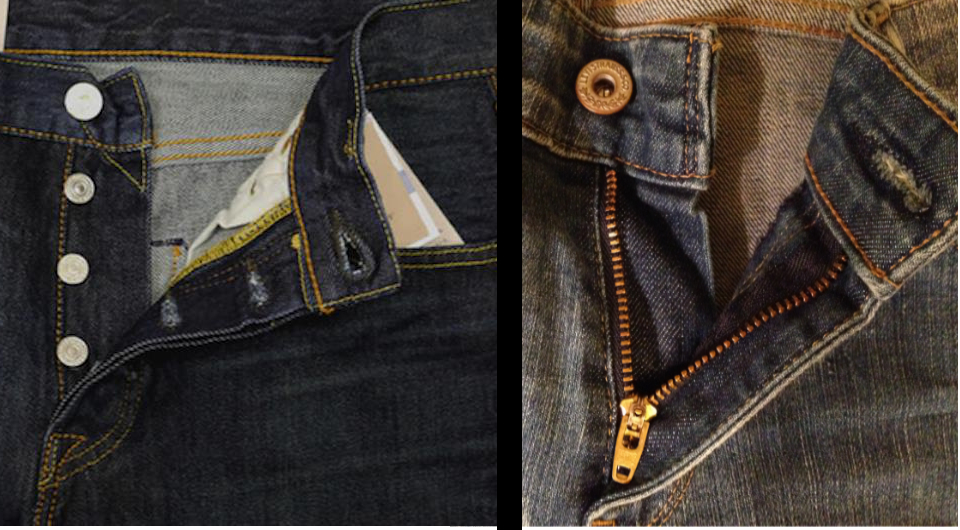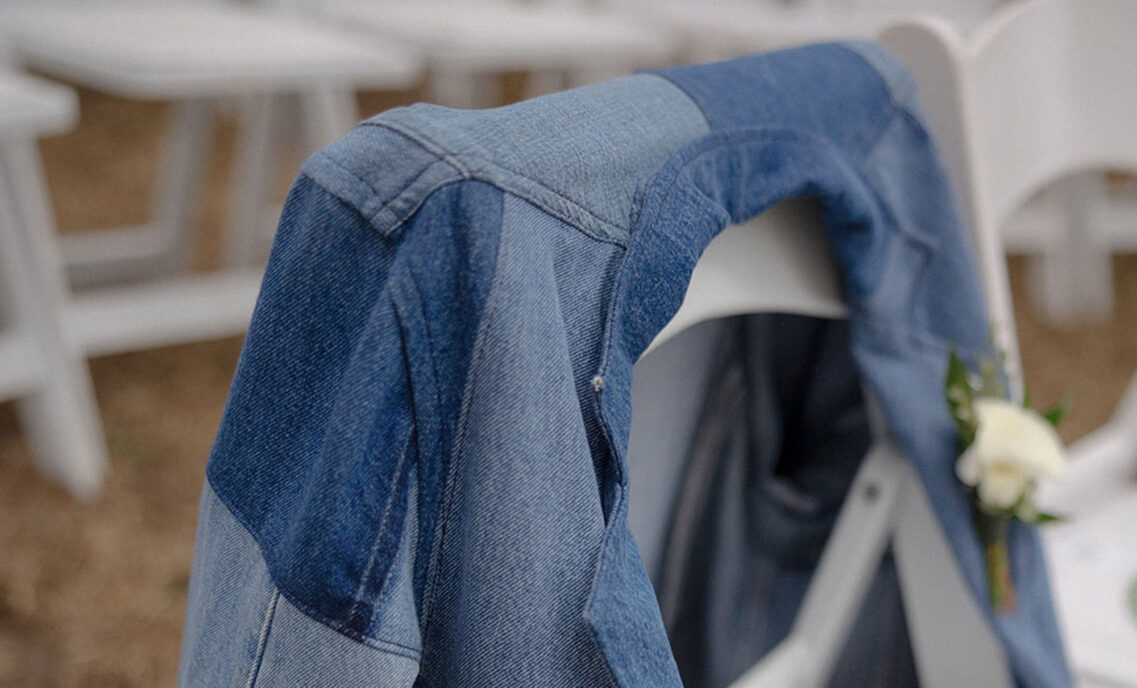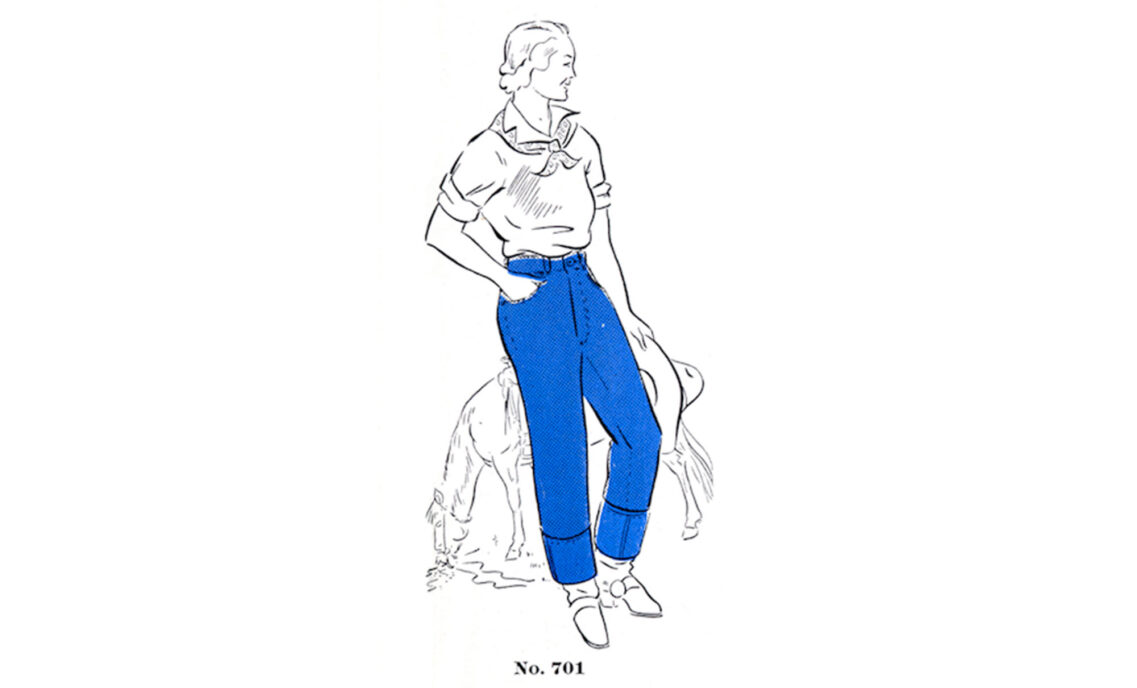Don’t let the name “Unzipped” fool you. When it comes to flies, we’re as fond of the classic button version as its modern zipper cousin. But such neutrality is a rarity amongst jean devotees. No part of the pant has inspired such debate amongst denimheads and non-denimheads alike as the preferred method of closure. It’s a battle fought between two camps, button believers and zipper zealots, with each side believing their method superior.
A Fly History
For denim puritans, it’s button or bust. The button fly has gained widespread appeal in recent years for its classic vintage look, and traces roots all the way back to the original pair of 501s created on May 20, 1873. That’s 20 years before the zipper was even conceived, and almost a half-century prior to the invention of the zipper as we know it.
Because zippers are so commonplace, it is easy to forget their technical wizardry. The fastener, whose name is derived from the sound, or “zip,” the slider makes when being closed, took over 20 years of determination and many great minds to create — from Whitcomb L. Judson’s initial “Clasp Locker Or Unlocker” developed for button-up boots in 1891, to Swedish-born engineer Otto Frederick Gideon Sundback’s “Hookless Hooker” of 1912, which replaced hook-and-eyes with teeth in the design, and ultimately changed the face of fastening forever.
It wasn’t until 1947 that Levi’s added a zipper fly to jeans, hoping to appeal to female customers. While western women who worked on ranches had been wearing men’s button fly jeans for years, many proper women on the East Coast considered the button version of jeans to lack modesty.
Form, Function and Fine Motor Skills
The closure debate goes beyond just a question of “old school” versus “new wave.” It is also one of function. In terms of the technical adeptness required, most concur that the more efficient zipper wins out, with an undeniable convenience that keeps pace with our modern high-speed world.
Buttons require more motor skill to close and add bulk. And for today’s popular skinny jean styles, buttons simply won’t cut it — fabric can bulge and pull apart without the “suck in and yank up” approach that a zipper provides.
But all that being said, zippers are more likely to break and get stuck, more difficult to repair, and more likely to come undone. They also pose a minor threat to the wearer. In the words of the great Jerry Seinfeld (a button-fly devotee) “That is one place on my wardrobe I do not need sharp interlocking metal teeth.”
And for true deminheads, another benefit of the button fly is an aesthetic one. Buttons actually create more interesting coloration on the fly over time because of their bulk, a desirable characteristic for fade fanatics.
We here at LS&Co. believe as much in upholding traditions of the past as we do in innovating for the future. Who knows what is in store for the future of the fly, and what modern contraption could someday change the course of how we get in and out of our denim? But until another fastener shakes things up, the modern zipper closure and traditional buttons will both have a place on our Levi’s.
Help us settle the button vs. zipper debate once and for all by submitting your vote here:
[yop_poll id=”2″]







